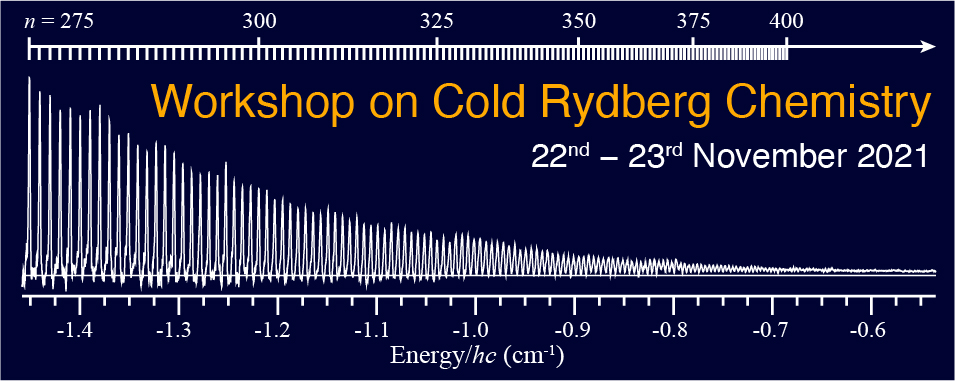Speaker
Description
In a recent breakthrough in first-principles calculations of two-electron systems, Patkóš, Yerokhin and Pachucki [PRA 103, 042809 (2021)] have performed the first complete calculation of the Lamb shift of the helium $2\,^3\mathrm{S}_1$ and $2\,^3\mathrm{P}_J$ triplet states up to the term in $\alpha^7 m$. Whereas their theoretical result of the frequency of the $2\,^3\mathrm{P}\leftarrow 2\,^3\mathrm{S}$ transition perfectly agrees with the experimental value, a more than $10\sigma$ discrepancy was identified for the $3\,^3\mathrm{D}\leftarrow 2\,^3\mathrm{S}$ and $3\,^3\mathrm{D}\leftarrow 2\,^3\mathrm{P}$ transitions, which hinders the determination of the He$^{2+}$ charge radius from atomic spectroscopy that is necessary to complement the recent $\alpha$-particle charge radius determination using muonic helium from J. Krauth et al. [Nature 589, 527531 (2021)].
We report on the determination of the ionization energy of the metastable $2\,^1\mathrm{S}_0$ state of He ($960\,332\,040.491(32)\;\mathrm{MHz})$ by Rydberg-series extrapolation through the determination of the
frequencies of 21 transitions from the $2\,^1\mathrm{S}_0$ state to $n$p Rydberg states with principal quantum number $n$ in the range between 24 and 102, yielding a relative uncertainty of $3\times 10^{-11}$ [PRL 127, 093001 (2021)]. A one-photon ($\sim$312 nm) excitation scheme is used for Rydberg-state excitation of metastable He atoms in a doubly skimmed supersonic beam. The absolute frequency calibration is achieved using a frequency comb referenced to a GPS-disciplined Rb clock.
This absolute measurement is used in combination with the $2\,^3\mathrm{S}_1\leftarrow 2\,^1\mathrm{S}_0$ interval measured by van Rengelink et al. [Nat. Phys. 14, 1132 (2018)] and the $2\,^3\mathrm{P}\leftarrow 2\,^3\mathrm{S}_1$ interval measured by Zheng et al. [PRL 119, 263002 (2017)] and Cancio Pastor et al. [PRL 92, 023001 (2004)] to derive experimental ionization energies of the $2\,^3\mathrm{S}_1$ state ($1\,152\,842\,742.640(32)$ MHz) and the $2\,^3\mathrm{P}$ centroid energy ($876\,106\,247.025(39)\;\mathrm{MHz})$. These values reveal disagreements with the $\alpha^7m$ Lamb shift prediction by 6.5$\sigma$ and 10$\sigma$, respectively, and support the suggestion by Patkóš et al. of an unknown theoretical contribution to the Lamb shifts of the $2\,^3\mathrm{S}$ and $2\,^3\mathrm{P}$ states of He.

